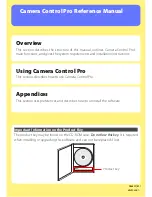
WiseScript Package Editor Reference
110
Using Script Editor
action that does not already have an End action. You can nest conditions and loops to
many levels, but in most circumstances it won’t be necessary to nest more than three or
four levels deep. The indentation, which increases for each nested structure, helps you
interpret deep nestings.
Connection Lines
Connection lines connect the beginning and end of conditions or loops. To add
connection lines, select View menu > Connections Lines.
Variables and Expressions
Variables
Variables are named storage locations that hold information about the system,
information entered by the end user, or information derived or calculated from either of
these sources. You can define up to 400 variables using the Set Variable action. You can
then gather data from the end user or read data from files to put into variables.
Variables hold ASCII text, not binary data. They can be up to 32 KB in length.
(WiseScript Package Editor only) Some variables are defined by Installation Expert.
Example: The WIN variable contains the path to the Windows system directory.
Variable Naming Conventions
z
Must begin with a letter.
z
Must be 28 characters or less.
z
Cannot begin with an underscore character; only compiler variables can start with
an underscore character.
z
Cannot contain % characters, except when using substitution as described below.
Variables and Substitution
By using variables, the installation .EXE can adapt to each destination computer. Once
information is stored in a variable, it can be used in most script actions through a
process called substitution. Any parameter for a script action can get part or all of its
value from a variable.
To use substitution, specify the variable name preceded and followed by %. (Examples:
%WIN% refers to the contents of the WIN variable, which is the path to the Windows
system directory, and %WIN%\Fonts refers to the path to the Windows font directory.)
The % character is not part of the variable name, but rather a marker that tells
WiseScript to replace the variable’s name with its value before executing the command.
To include an actual % character in the script, use %%.
You can use substitution to:
z
Build messages to display to the end user.
z
Set locations for copying or installing files.
z
Initialize new variables to the value of one or more other variables.
Expressions
z
If you are using a variable name as part of an expression, do not surround the
variable name with % characters. (Example: When you use an If, ElseIf, While, Set
Содержание WISESCRIPT PACKAGE EDITOR 8.0
Страница 1: ...WiseScript Package Editor Reference ...
















































